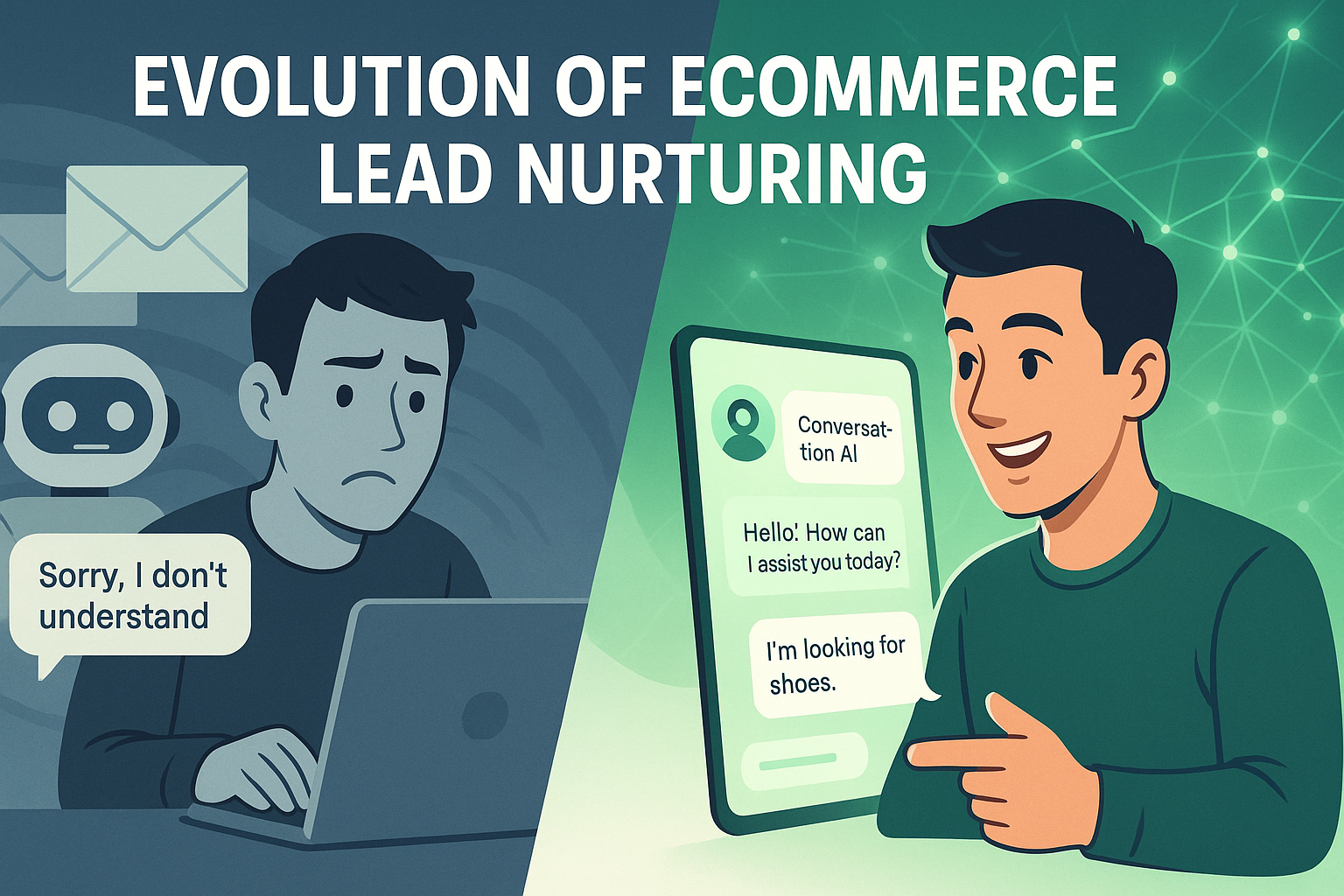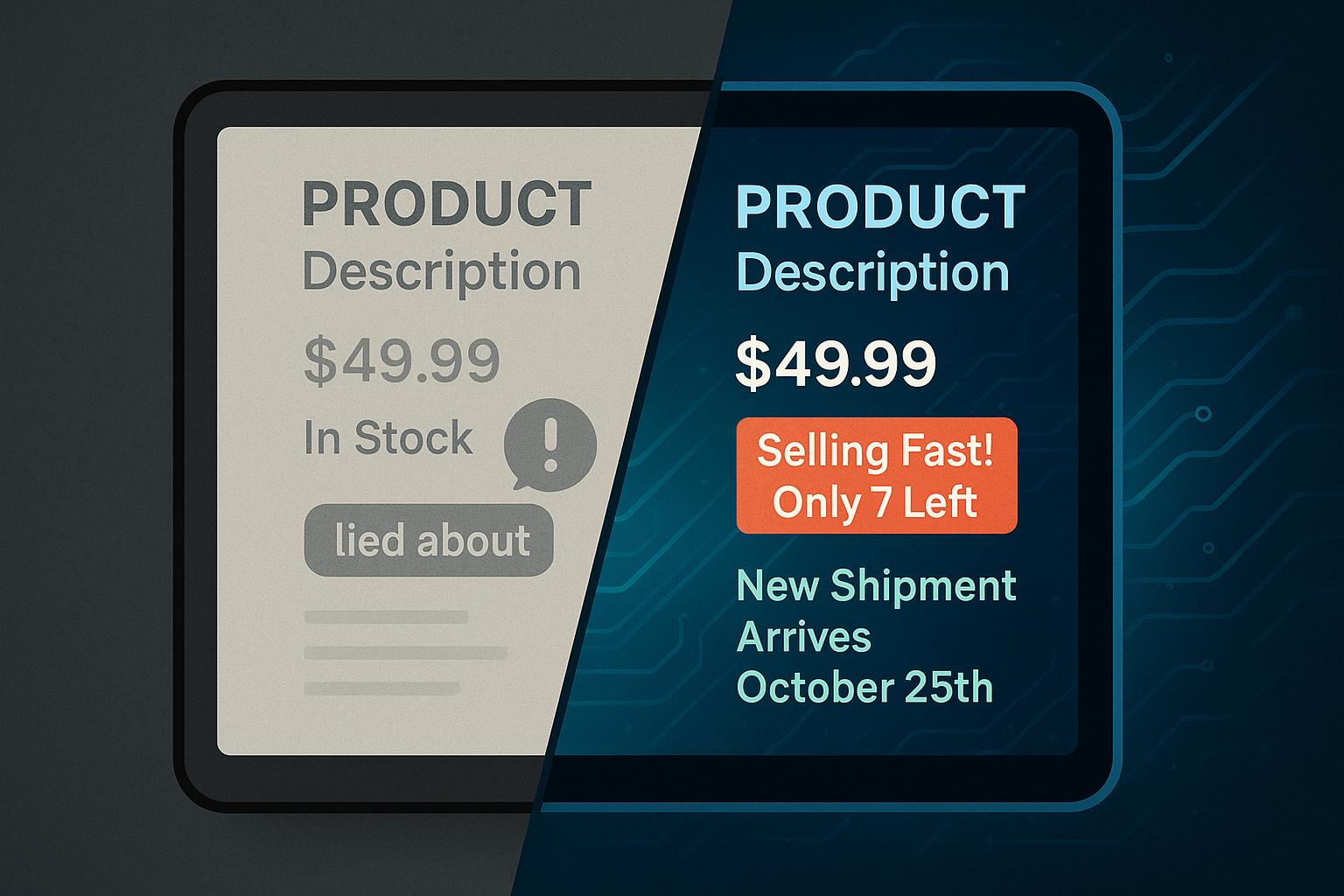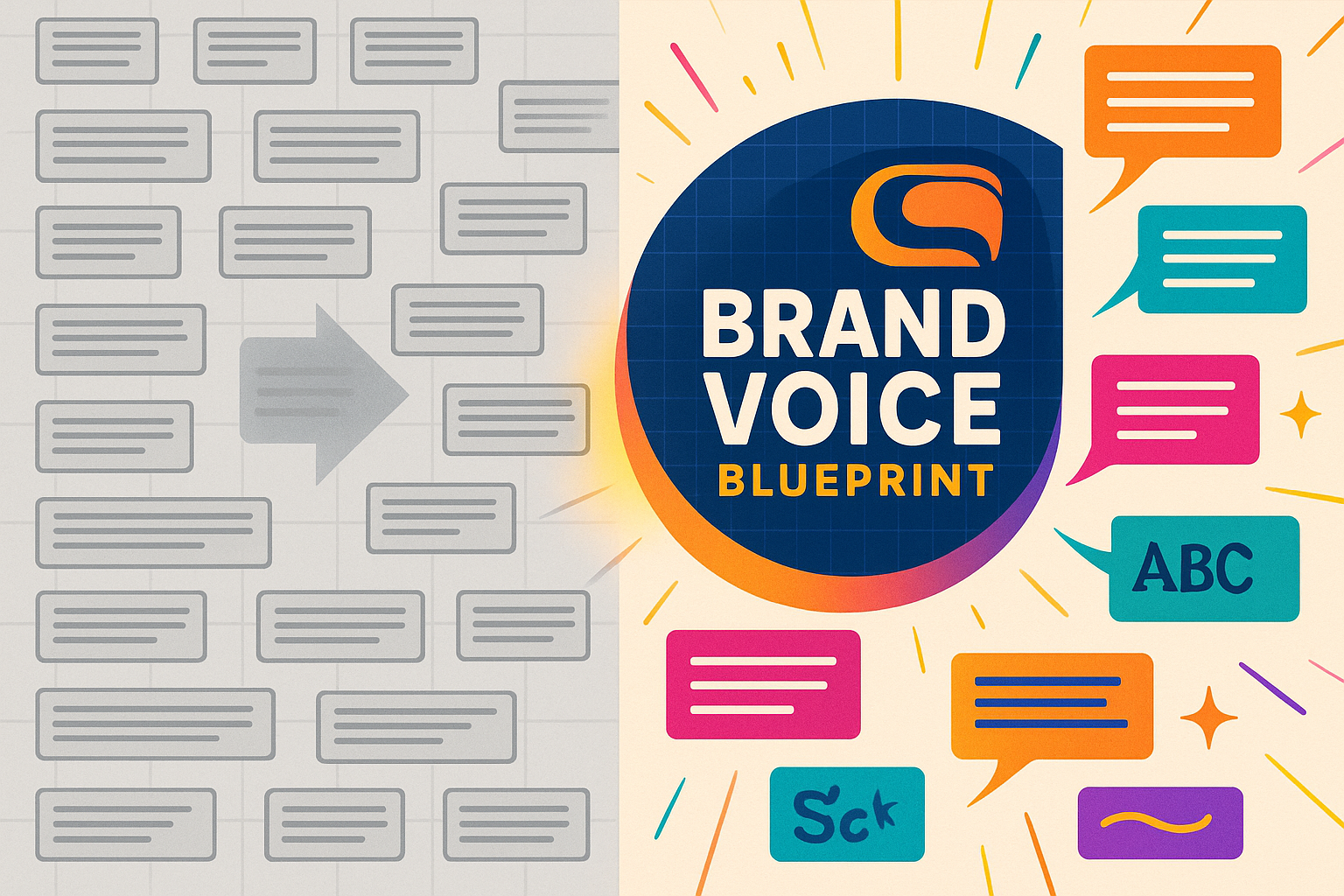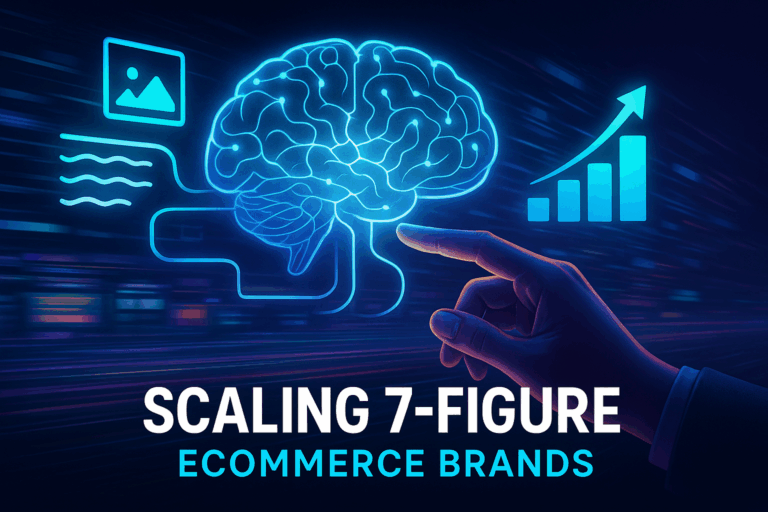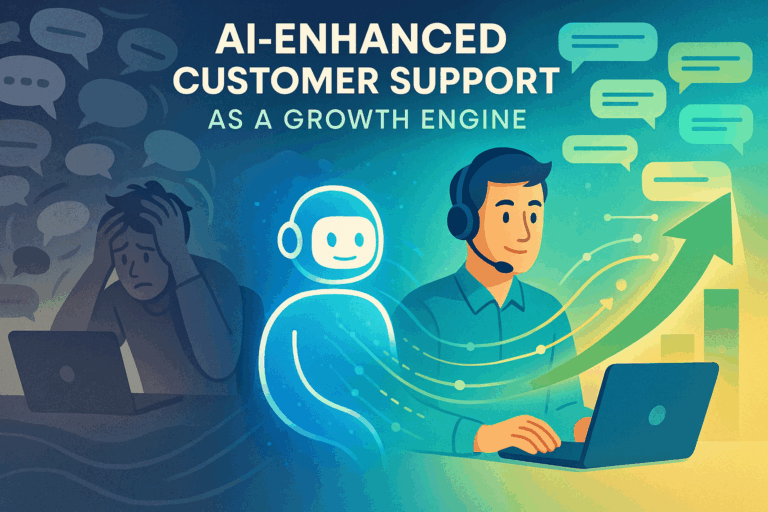Imagine a customer lands on your site at 11 PM. They’re excited about a product but have one critical question about sizing. Your support team is offline. They could send an email and wait, but the buying momentum is gone. They close the tab, and a potential sale vanishes.
This isn’t a rare scenario; it’s the default for most ecommerce brands. We spend fortunes on ads to get people to our digital doorstep, only to leave them alone in the store. Traditional lead nurturing tries to fix this with email sequences and pop-ups, but it’s often a one-way street—shouting discounts into a void.
What if you could have an expert salesperson on your site 24/7, ready to engage every single visitor in a helpful, personalized conversation? That’s the shift conversational AI is making possible.
It’s not about replacing humans; it’s about scaling the kind of personal attention that turns casual browsers into loyal customers.
What Exactly Is Conversational AI? (And Why It’s Not Just a Basic Chatbot)
Let’s clear up a common misconception. When people hear “chatbot,” they often picture a clunky, rule-based pop-up that can only answer from a rigid script. If you type something it doesn’t recognize, it responds with a frustrating “Sorry, I don’t understand.”
Conversational AI is the evolution of that.
It’s a smarter system powered by technologies like Natural Language Processing (NLP) and Machine Learning (ML). Instead of just matching keywords, it understands context, intent, and even sentiment.
- Rule-Based Chatbot: “If user types ‘shipping,’ show shipping policy link.”
- Conversational AI: Understands the difference between “How much is shipping?”, “Where is my order?”, and “Do you ship to Canada?”—and provides the right answer for each.
Think of it as the difference between a vending machine and a knowledgeable store associate. One dispenses pre-programmed items; the other listens, understands, and guides you to the perfect solution.
This ability to have a dynamic, two-way dialogue is what transforms a simple chatbot into a powerful lead nurturing tool.
The Old Way vs. The New Way of Nurturing Leads
For years, ecommerce lead nurturing has relied on a predictable playbook: capture an email, then send a series of automated messages. While better than nothing, this approach is fundamentally broken for today’s consumer. It’s impersonal, often irrelevant, and doesn’t happen in the moment when the customer is most engaged.
Conversational AI flips the script by meeting customers where they are, right when their interest is highest.
| Traditional Lead Nurturing | Conversational AI Nurturing |
|---|---|
| One-Way Communication: Brand sends emails to the lead. | Two-Way Dialogue: AI engages in a real-time conversation. |
| Delayed Interaction: Nurturing happens hours or days later. | Instant Engagement: Nurturing begins the second a visitor shows intent. |
| Generic Segmentation: Based on pages visited or items clicked. | Dynamic Personalization: Based on the actual conversation and behavior. |
| Passive Experience: The customer reads or watches content. | Active Experience: The customer participates and co-creates their journey. |
The practical takeaway: Instead of just pushing information, you’re pulling insights directly from the customer, allowing you to serve their needs instantly and build a relationship from the very first click.
How Conversational AI Transforms the Ecommerce Customer Journey
So, how does this work in practice? Conversational AI isn’t a single feature; it’s a set of capabilities that can be deployed at critical moments in the buying journey to guide potential customers toward a purchase.
Answering Pre-Purchase Questions, Instantly
Uncertainty kills conversions. Is this jacket waterproof? Does this supplement contain allergens? Can I return it if it doesn’t fit? An AI-powered assistant can provide instant, accurate answers to thousands of product-specific questions 24/7, removing friction and building the trust needed for a customer to click “Add to Cart.”
Becoming a Personal Shopper with AI Product Recommendations
A great salesperson doesn’t just answer questions; they ask them. Conversational AI can act as a personal shopping guide.
- Visitor: “I’m looking for a gift for my dad.”
- AI Assistant: “Great! What are his hobbies? Is he into tech, outdoors, or cooking?”
Based on the responses, the AI can present a curated list of relevant products. This goes beyond showing “related items.” It’s a guided discovery process fueled by a deep understanding of your product catalog—something made possible by robust proprietary feed strategies that ensure the AI has accurate, detailed information to work with.
Qualifying Leads Without the Annoying Forms
Instead of forcing visitors to fill out a “Contact Us” form, an AI assistant can qualify them through natural conversation. It can identify if a visitor is a high-intent B2B buyer, a potential brand ambassador, or a customer who needs specialized support, routing them to the right human team member without making them jump through hoops.
Recovering Lost Sales from Abandoned Carts
A shopper adds items to their cart but hesitates at checkout. Instead of waiting to send a “You forgot something!” email 24 hours later, a conversational AI can proactively engage them on the spot. It can pop up with a helpful, non-intrusive message like:
“Hey, looks like you have some great items in your cart. Do you have any questions about shipping or returns before you check out?”
This simple, timely intervention can be the difference between an abandoned cart and a completed sale.
The Proof Is in the Numbers: Real-World Impact
This isn’t just theory. Brands putting conversational AI to work are seeing significant results. Data shows that shoppers who engage with AI chat are far more likely to buy—one study noted a conversion rate of 12.3% for users who interacted with AI chat, compared to just 3.1% for those who didn’t.
Beauty giant Sephora is a classic example. Their Virtual Artist tool doesn’t just show you what a lipstick looks like. It nurtures the lead by asking about your preferences and helping you find the perfect shade, effectively walking you down the path to purchase with personalized, expert advice. It solves a real problem for the customer, and in doing so, drives sales.
Here’s what this means for your brand: a well-implemented conversational AI strategy can directly lift revenue by improving conversion rates, increasing average order value through smart recommendations, and reducing cart abandonment.
Getting Started: Key Considerations
Implementing conversational AI isn’t about just turning on a tool. It requires a strategic approach.
- Map the Journey: Identify the key points on your site where customers get stuck, ask questions, or drop off. These are your prime opportunities for an AI intervention.
- Design Thoughtful Conversations: Don’t just program a script. Think about the customer’s goal in each conversation and design a flow that is helpful, natural, and reflects your brand voice.
- Integrate Your Data: The smartest AI assistants are connected to your core business systems—your product catalog, inventory, and CRM. This allows for truly personalized and accurate interactions.
The insights you gather from these conversations are gold. They reveal what customers are searching for, where your site is confusing, and what product information is missing. This data can supercharge your entire marketing effort, from informing the content created by an SEO AI Agent for Ecommerce to adapting to the new landscape of Generative Engine Optimization (GEO).
Frequently Asked Questions (FAQ)
What is the main benefit of conversational AI for lead nurturing?
The primary benefit is the ability to engage leads in a personalized, two-way conversation in real-time. This builds trust, answers critical questions instantly, and guides customers through their buying journey 24/7, leading to higher conversion rates and customer satisfaction.
Is conversational AI difficult to implement?
The complexity can vary. Basic chatbots can be set up relatively quickly. However, a truly effective conversational AI system that integrates with your product data and understands customer intent requires more strategic planning. The key is to start small, focus on solving one or two key customer problems, and expand from there.
Will a chatbot annoy my customers?
A poorly designed, rule-based chatbot certainly can. But a well-designed conversational AI is the opposite of annoying—it’s helpful. By providing immediate answers, personalized recommendations, and on-demand support, it reduces customer frustration and makes the shopping experience smoother and more enjoyable. The goal is to be a helpful assistant, not a pushy salesperson.
The Next Conversation Your Brand Should Have
The question is no longer if AI will be a part of the ecommerce experience, but how thoughtfully it will be implemented. Moving beyond static websites to create interactive, conversational experiences is the next major competitive advantage.
AI isn’t replacing strategy—it’s amplifying it. It allows you to scale the high-touch, consultative selling that was once only possible in a physical store. By embracing this technology, you can stop broadcasting messages and start building real relationships with every visitor.
For brands ready to move beyond off-the-shelf solutions, the next step is exploring how Custom AI Agents for Ecommerce can be trained on your unique business data and customer needs to create a truly seamless and intelligent nurturing system.

